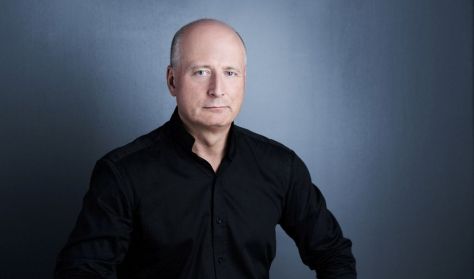The evening opens with a concert overture by Erkki-Sven Tüür. Aditus, written in 2000, explores existential questions, and its chromatic melodies can evoke a variety of thoughts in the listener. The tension of the new sound will be relieved by Robert Schumann's lively, spring-like work, in which the composer found his way to writing symphonies after Beethoven. The concert will close with Jean Sibelius' most popular symphony. This colorful work progresses through three extensive movements to an elevated depiction of flying swans.
"As an abstract art form, music can evoke different visions for each individual being, because we are all unique," says Tüür, summing up the purpose and essence of his music. With Aditus, the Estonian composer, known primarily for his instrumental works, pays tribute to his compatriot and colleague Lepo Sumera, who died in 2000. This Latin word means entrance, entry, approach. The work, built of semitones and then a tied sequence of notes, begins with material played on brass and tubular bells, interrupted again and again by the resistance of floating strings. There is a rhythmic section with exciting harmonies, which then dissolves completely into a cascade of timbres.
The first symphony is an important milestone in the oeuvre of all post-Beethoven composers. Schumann composed his first symphony during one of the happiest and therefore most productive periods of his life, after a few aborted attempts. The Beginning of Spring, Evening, Merry Playfellows, Spring in Full Bloom – these were the programmatic titles of the movements. And although Schumann eventually deleted them, the piece, sketched in four days and written in less than a month, takes its nickname from the composer. The brass motto of the slow introduction appears several times throughout the work. It's there in the violin melody of the song-like slow movement, in the furious scherzo trio that follows without pause and in the finale that bids farewell to spring.
In 1915, a grandiose celebration was organized for Sibelius's 50th birthday. The composer conducted the first version of his Fifth Symphony, and later revised the work twice. The Symphony by Sibelius, struggling with health problems, exudes heroic determination with its full major movements. The first movement merged the previous opening movement and the scherzo. The pleasantly swirling but intricately structured music is built from small motifs. Beneath the surface of the simple variation of the slow movement, the mood of the finale is set, and then the movement, which illustrates the swans' wing flapping leads to the triumph of the swan theme, and concludes the work.
Erkki-Sven Tüür: Aditus
Robert Schumann: Symphony No. 1 in B-flat major (“Spring”), Op. 38
Jean Sibelius: Symphony No. 5 in E-flat major, Op. 82
conductor: Paavo Järvi




